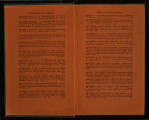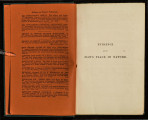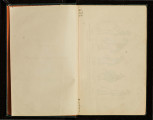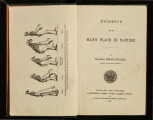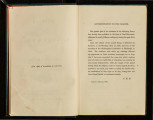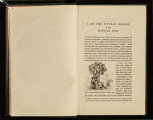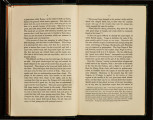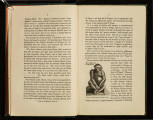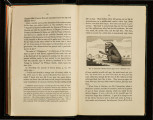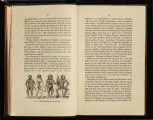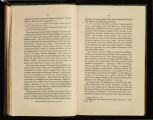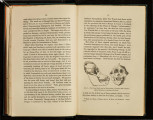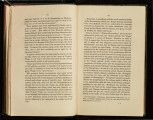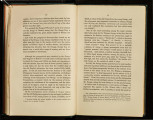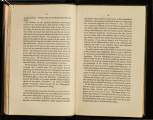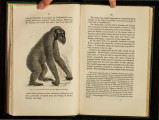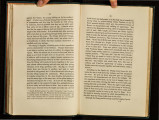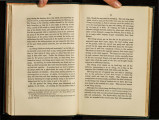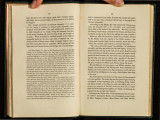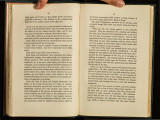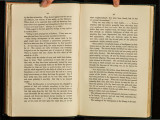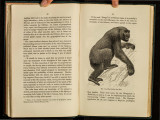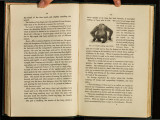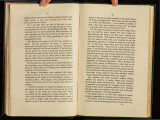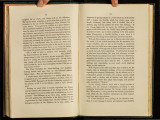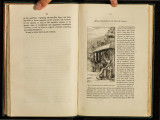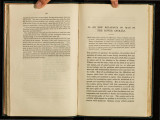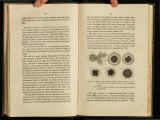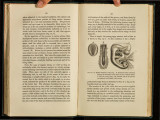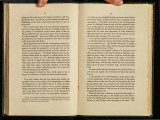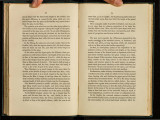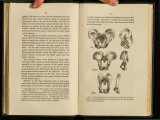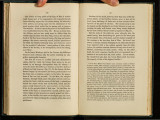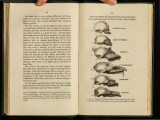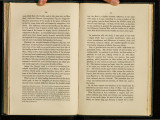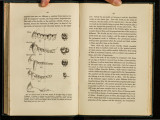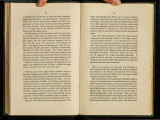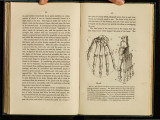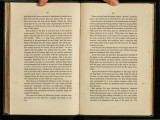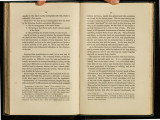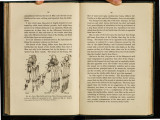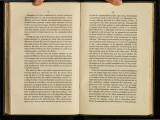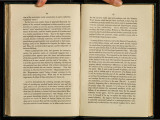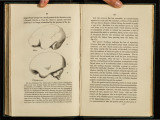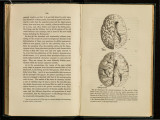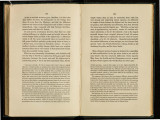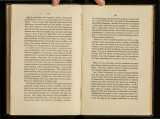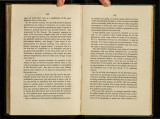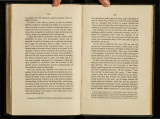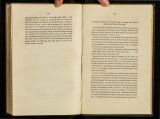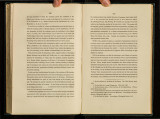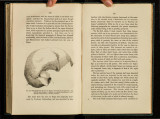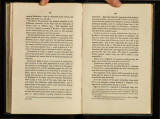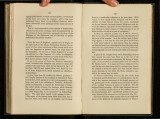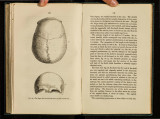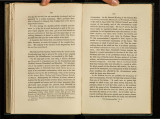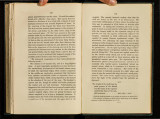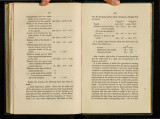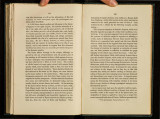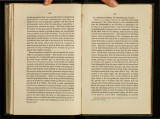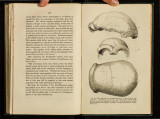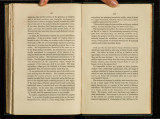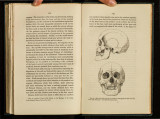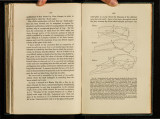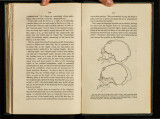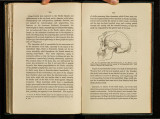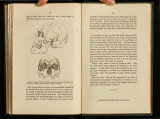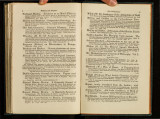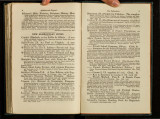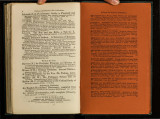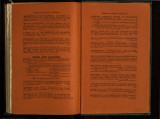| OCR Text |
Show 134 that tl1is shortening, as well as the attenuation of the left humerus, are both consequent upon the pathological condition above described. 4. A left ilium, almost perfect, and belonging to the femur; a fragment of the right scapula; the anterior extremity of a rib of the right side; and the same part of a rib of the left side; -the hinder part of a rib of the right side; and, lastly, two hinder portions and one middle portion of ribs, which, from their unusually rounded shape, and abrupt curvature, more resemble the ribs of a carnivorous animal than those of a man. Dr. H. v. Meyer, however, to whose judgment I defer, will not venture to declare them to be ribs of any animal; and it only remains to suppose that this abnormal condition has arisen from an unusually powerful development of the thoracic muscles. The pones adhere strongly to the tongue, although, as proved by the use of hydrochloric acid, the greater part of the cartilage is still retained in them, which appears, however, to have undergone that transformation into gelatine which has been observed by v. Bibra in fossil bones. The surface of all the bones is in many spots covered with minute black specks, which, more especially under a lens, are seen to be formed of very delicate dendrites. These deposits, which were first observed on the bones by Dr. Mayer, are most distinct on the inner surface of the cranial bones. They consist of a ferruginous compound, and, from their black colour, may be supposed to contain manganese. Similar dendritic formations ~lso occur, not unfrequently, on laminated rocks, and are usually found in minute fissures and cracks. At the meeting of the Lower Rhine Society at Bonn, on the 1st April, 1857, Prof. Mayer stated that he had noticed in the museum of Poppelsdorf similar dendritic crystalljzations on several fossil bones of animals, and particularly on those of Ursus spelceus) but still more abundantly and beautifully displayed on the fossil bones and teeth of Equus adamiticus, Elephas primigenius, &c., from the caves of Bolve and Sundwig. Faint 135 indications of similar dendrites· were visible in a Roman skull from Siegburg; whilst other ancient skulls, which had lain for centuries in the earth, presented no trace of them.* I am indebted to H. v. Meyer for the following remarks on this subject:- ,,The incipient formation of dendritic deposits, which were formerly regarded as a sign of a truly fossil condition, is interesting. It has even been supposed that in diluvial deposits the presence of dendrites might be regarded as affording a certain mark of distinction between bones mixed with the diluvium at a somewhat later period and the true diluvial relics, to which alone it was supposed that these deposits were confined. But I have long been convinced that neither can the absence of dendrites be regarded as indicative of recent age, nor their presence as sufficient to establish the great antiquity of the objects upon which they occur. I have myself noticed upon paper, which could scarcely be more than a year old, dendritic deposits, which could not be distinguished from those on fossil bones. Thus I possess a dog's skull from the Roman colony of the neighbouring Heddersheim, Castrum Hadrianum, which is in no way distinguishable from the fossil bones from the Frankish caves ; it presents the same colour, and adheres to the tongue just as they do; so that this . character also, which, at a former meeting of German naturalists at Bonn, gave rise to amusing scenes between Buckland and Schmerling, is no longer of any value. In disputed cases, therefore, the condition of the bone can scarcely afford the means for determining with certainty whether it be fossil, that is to say, whether it belong to geological antiquity or to the historical period." As we cannot now look upon the primitive world as representing a wholly different condition of things, from which no transition exists to the organic life of the present time, the designation of fossil, as applied to a bone, has no longer the sense it conveyed in the time of Cu vier. S uffi cien t grounds exist * Vorh. des Naturhist. Vereins in Bonn, xiv. 1857. |



